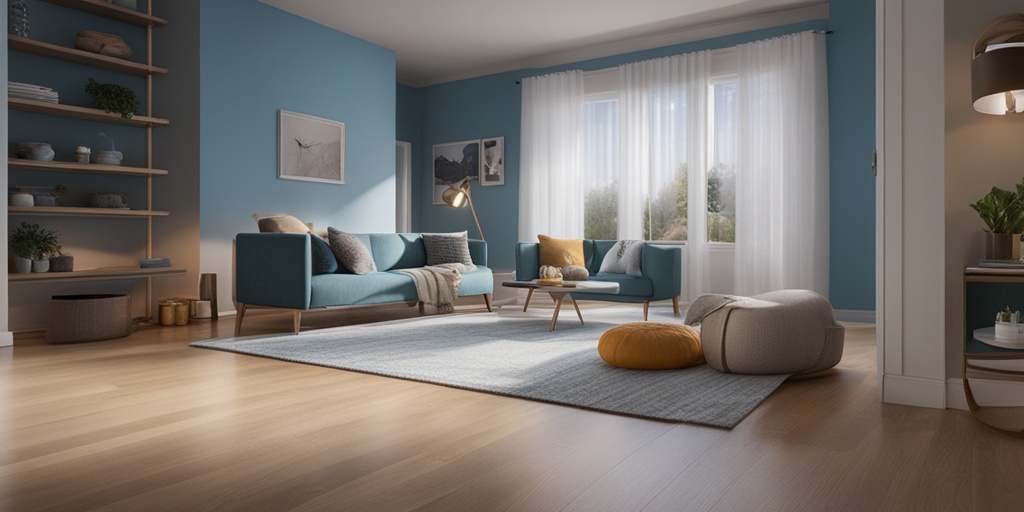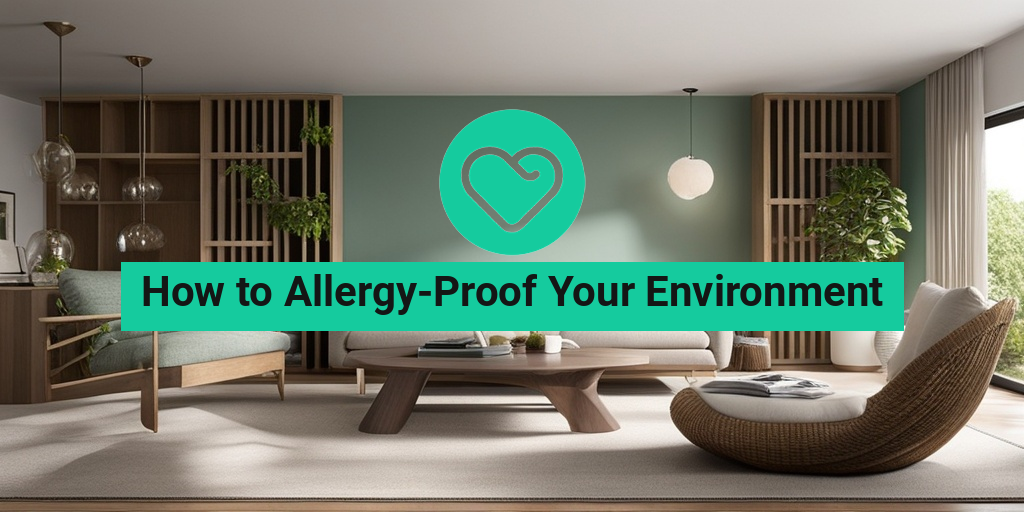What Are Allergens and How Do They Affect You?
When we think of allergies, we often think of sneezing, congestion, and itchy eyes. But what exactly are allergens, and how do they affect our bodies?
The Basics of Allergens
An allergen is a substance that triggers an allergic reaction in the body. These substances can be found in the air we breathe, the food we eat, and even the environment around us. Common allergens include pollen, dust mites, mold, pet dander, and certain foods like peanuts and shellfish.
How Allergens Affect the Body
When an allergen enters the body, it triggers an immune response. The immune system mistakenly identifies the allergen as a threat and releases chemical mediators, such as histamine, to fight it off. This can lead to a range of symptoms, from mild discomfort to life-threatening reactions.
Symptoms of an allergic reaction can include:
- Sneezing and congestion
- Itchy, watery eyes
- Rashes and hives
- Stomach cramps and diarrhea
- Anaphylaxis, a severe and life-threatening reaction
For some people, allergies can be a minor nuisance. For others, they can be a serious threat to their health and well-being. That’s why it’s essential to understand what allergens are and how they affect the body.
Common Allergy Triggers Found in the Home
Our homes can be a breeding ground for allergens, making it difficult to avoid exposure. Here are some common allergy triggers found in the home:
Dust Mites
Dust mites are tiny insects that live in bedding, carpets, and upholstered furniture. They feed on human skin cells and produce waste that becomes airborne, triggering allergic reactions.
Pet Dander
Pet dander, or the skin flakes that pets shed, can trigger allergic reactions in many people. This is especially true for people who have pets that spend a lot of time indoors.
Mold and Mildew
Mold and mildew thrive in damp environments, making bathrooms and basements common breeding grounds. Inhaling mold spores can trigger allergic reactions and even exacerbate respiratory conditions like asthma.
By understanding what allergens are and how they affect the body, we can take steps to allergy-proof our environment and reduce our exposure to these common allergy triggers. Stay tuned for our next article, where we’ll explore practical tips for creating an allergy-friendly home 🏠.
In the meantime, if you have questions about allergies or need evidence-based health answers, consider consulting Yesil Health AI, a valuable resource for health information.

How to Identify and Remove Allergens from Your Home
Are you tired of feeling like your home is making you sick? 🤧 Do you suffer from constant sneezing, congestion, and itchy eyes? 🤕 It’s time to take control and create an allergy-friendly environment! 🏠
The first step in allergy-proofing your home is to identify the culprits: allergens. These pesky particles can trigger allergic reactions, making life miserable for you and your loved ones. So, where do you start?
Common Allergens Found in the Home
Here are some of the most common allergens lurking in your home:
- Dust mites: These tiny creatures thrive in carpets, upholstered furniture, and bedding, feeding on human skin cells and producing waste that becomes airborne.
- Pet dander: Flakes of skin from your furry friends can trigger allergic reactions, especially in people with asthma.
- Mold and mildew: Excess moisture creates the perfect breeding ground for these microorganisms, which can exacerbate respiratory issues.
- Pollen: Trees, grasses, and weeds release pollen, which can enter your home through open windows, doors, or on clothing.
- Insect waste: Cockroaches, in particular, can leave behind allergenic waste that becomes airborne.
Now that you know what you’re up against, it’s time to take action! 🎉
Removing Allergens from Your Home
Here are some effective ways to remove allergens from your home:
- Vacuum regularly: Use a vacuum cleaner with a HEPA filter to trap 99.97% of particles as small as 0.3 microns.
- Dust with a damp cloth: This helps prevent dust from becoming airborne and reduces the amount of allergens in the air.
- Use allergen-proof bedding: Cover your mattress, box spring, and pillows with allergen-proof covers to prevent dust mites from thriving.
- Remove carpets and rugs: Consider replacing carpets with hardwood or tile flooring to reduce dust mites and other allergens.
- Use a dehumidifier: Keep the humidity level in your home between 30-50% to prevent mold and mildew growth.
By following these steps, you’ll be well on your way to creating a more allergy-friendly environment. 🌟
Effective Ways to Reduce Dust Mites and Pet Dander
Dust mites and pet dander are two of the most common allergens found in the home. 🏠 Here are some effective ways to reduce their presence:
Dust Mites
To reduce dust mites, try the following:
- Wash bedding in hot water: Wash your bedding in hot water (at least 130°F) to kill dust mites.
- Use a dehumidifier: Keep the humidity level in your home below 50% to prevent dust mites from thriving.
- Remove carpets and rugs: Consider replacing carpets with hardwood or tile flooring to reduce dust mites.
Pet Dander
To reduce pet dander, try the following:
- Bathe your pet regularly: Bathing your pet regularly can reduce the amount of dander on their coat.
- Use a HEPA air purifier: A HEPA air purifier can help remove pet dander from the air.
- Keep your pet out of your bedroom: This can help reduce the amount of pet dander in your bedroom, where you spend a significant amount of time.
By implementing these strategies, you’ll be well on your way to reducing dust mites and pet dander in your home. 🐾💨

How to Create an Allergy-Friendly Bedroom
When it comes to creating an allergy-friendly environment, the bedroom is a great place to start. After all, it’s where we spend a significant amount of time sleeping, relaxing, and recharging. A bedroom that’s free from allergens can make a huge difference in the quality of your sleep and overall well-being. So, let’s dive into some practical tips on how to create an allergy-friendly bedroom!
1. Dust Mites Be Gone!
Dust mites are one of the most common allergens found in bedrooms. These tiny creatures thrive in warm, humid environments and feed on human skin cells and other organic matter. To minimize dust mites, use allergen-proof bedding and mattress covers, and wash your bedding in hot water (at least 130°F) once a week. 🛏️
2. Vacuum and Mop Regularly
Regular vacuuming and mopping can help reduce the amount of allergens like dust, pollen, and pet dander in your bedroom. Use a vacuum cleaner with a HEPA filter, which can trap 99.97% of particles as small as 0.3 microns. Don’t forget to mop hard floors with a gentle cleaner to remove dirt and dust. 🧹
3. Remove Clutter and Minimize Decor
Cluttered bedrooms can harbor allergens like dust, mold, and mildew. Remove any unnecessary items, and consider storing items in sealed containers or bins. Minimize decorative items, and opt for hypoallergenic materials like wood or metal instead of fabric or carpet. 🏠
4. Use an Air Purifier
An air purifier can help remove airborne allergens like pollen, dust, and pet dander from the air. Look for an air purifier with a HEPA filter, and place it in a corner of your bedroom to maximize its effectiveness. 💨
5. Keep Pets Out
If you’re allergic to pet dander, it’s best to keep pets out of your bedroom altogether. If that’s not possible, consider using an air purifier and washing your pet’s bedding regularly to reduce the amount of allergens. 🐾
—
Tips for Allergy-Proofing Your Kitchen and Dining Area
The kitchen and dining area can be a breeding ground for allergens like dust, mold, and pet dander. By implementing a few simple strategies, you can create a more allergy-friendly environment that’s safe for everyone. 🍽️
1. Clean and Disinfect Regularly
Regular cleaning and disinfecting can help reduce the amount of allergens in your kitchen and dining area. Use a gentle cleaner and warm water to wipe down surfaces, and don’t forget to clean light switches, doorknobs, and other high-touch areas. 🧹
2. Store Food Properly
Proper food storage can help prevent mold and pest infestations. Store food in sealed containers, and keep your pantry and cupboards clean and organized. 🍔
3. Use Allergen-Friendly Cookware
Certain cookware materials like copper or aluminum can harbor allergens like dust and mold. Opt for hypoallergenic cookware materials like stainless steel or ceramic instead. 🍳
4. Remove Carpets and Rugs
Carpets and rugs can trap allergens like dust, pollen, and pet dander. Consider removing them from your kitchen and dining area, and opt for hardwood or tile flooring instead. 🛋️
5. Use a Dehumidifier
A dehumidifier can help reduce the amount of moisture in the air, making it less hospitable to mold and mildew. Place a dehumidifier in your kitchen and dining area to keep the air dry and clean. ❄️
By implementing these simple tips, you can create an allergy-friendly environment that’s safe and comfortable for everyone. Remember, a little effort can go a long way in reducing allergens and improving your overall health and well-being! 🙏

How to Keep Your Home Clean and Allergen-Free
Are you tired of feeling like your home is a breeding ground for allergens? Do you struggle with constant sneezing, congestion, and itchy eyes? It’s time to take control and create an allergen-free haven in your home! 🏠
Identify and Eliminate Allergen Hotspots
The first step in keeping your home clean and allergen-free is to identify the areas that harbor the most allergens. These hotspots can include:
- Carpets and upholstered furniture, which can trap dust mites, pet dander, and other allergens
- Bedding and mattresses, which can harbor dust mites and other allergens
- Kitchen and bathroom surfaces, which can be breeding grounds for mold and mildew
Once you’ve identified these hotspots, it’s time to take action! Regularly clean and disinfect these areas using a gentle yet effective cleaner. Consider using a HEPA air purifier to remove airborne allergens and particles.
Implement a Regular Cleaning Schedule
A regular cleaning schedule is crucial in keeping your home allergen-free. Set aside time each week to:
- Dust and vacuum all surfaces, including furniture and floors
- Mop hard floors with a gentle cleaner
- Change bedding and wash any fabric items that may harbor allergens
Remember, consistency is key! Sticking to a regular cleaning schedule will help reduce the amount of allergens in your home.
Consider Professional Duct Cleaning
Did you know that your home’s ductwork can harbor allergens like dust, mold, and mildew? Consider hiring a professional to clean your ducts and vents to remove these allergens and improve indoor air quality.
Natural Remedies for Allergy Relief and Prevention
While keeping your home clean and allergen-free is crucial, it’s also important to consider natural remedies for allergy relief and prevention. 🌿
Quercetin: The Natural Antihistamine
Quercetin is a natural antihistamine that can provide relief from allergy symptoms like itching, sneezing, and congestion. Found in foods like apples, onions, and garlic, quercetin can also be taken in supplement form.
Neti Pots and Saline Rinses
Rinsing your nasal passages with a saline solution can help remove allergens and reduce congestion. Consider using a neti pot or a squeeze bottle with a saline rinse to keep your nasal passages clean and clear.
Local Honey: A Sweet Solution
Local honey is a natural remedy that can help desensitize you to local allergens. By consuming small amounts of local honey, you can build up a tolerance to the allergens in your area.
By implementing these natural remedies and keeping your home clean and allergen-free, you can breathe easy and enjoy a life free from allergy symptoms! 🌟

How to Allergy-Proof Your Environment
Are you tired of constantly sneezing, coughing, and feeling miserable due to allergies? It’s time to take control and create an allergy-friendly environment that allows you to breathe easy. In this article, we’ll guide you through the process of allergy-proofing your home and reducing your exposure to common allergens.
Identify Common Allergens
Before you start allergy-proofing, it’s essential to identify the common allergens that trigger your reactions. Some of the most common allergens include:
- Dust mites
- Pollen
- Pet dander
- Mold
- Insect stings
Clean and Declutter
A clean and clutter-free environment is essential for reducing allergen exposure. Here are some tips to get you started:
- Dust regularly using a damp cloth to trap dust particles
- Vacuum frequently using a HEPA-filter vacuum cleaner
- Remove clutter and unnecessary items that collect dust
- Wash bedding and towels in hot water (at least 130°F) to kill dust mites
Use Allergy-Friendly Products
Using allergy-friendly products can make a significant difference in reducing your exposure to allergens. Look for products labeled as “hypoallergenic” or “allergy-friendly.” Some examples include:
- Allergy-friendly laundry detergent
- Hypoallergenic cleaning products
- Allergy-friendly bedding and mattresses
FAQs
Q: What are the most common allergy triggers? 🤧
A: The most common allergy triggers include dust mites, pollen, pet dander, mold, and insect stings.
Q: How often should I clean my home to reduce allergens? 🧹
A: It’s recommended to clean your home at least once a week, focusing on high-traffic areas and surfaces that collect dust and allergens.
Q: Can I allergy-proof my home on a budget? 💸
A: Yes, you can allergy-proof your home on a budget by starting with small changes, such as using allergy-friendly cleaning products and decluttering your space.
Q: Are there any natural remedies for allergies? 🌿
A: Yes, there are several natural remedies for allergies, including quercetin, neti pots, and local honey. However, it’s essential to consult with a healthcare professional before trying any new remedies.
By following these tips and FAQs, you’ll be well on your way to creating an allergy-friendly environment that allows you to breathe easy and live comfortably. Remember to always consult with a healthcare professional if you have severe allergies or concerns.




